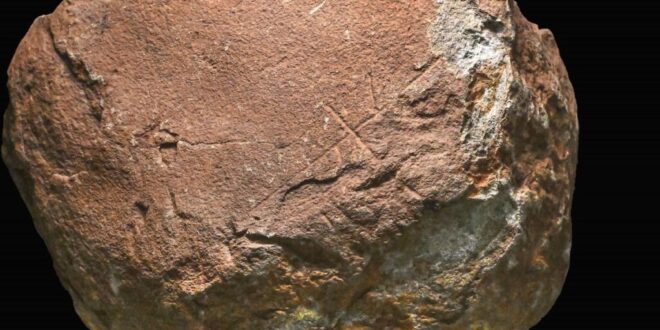Marbella’s prehistoric rock carvings are 200,000 years old. Some of Europe’s oldest human-made sculptures.
Credit: Ayuntamiento de Marbella
Coto Correa: A Historic Discovery
This discovery was made during an archaeological survey at Coto Correa. The site has been recognised as a historical landmark since the 1950s. Prior excavations have uncovered ancient stone tool links to Marbella’s earliest humans, but the latest discovery takes this area’s legacy a new level.
At the heart of the excitement is a chunk of gabbro – a coarse, dark rock – featuring a series of engraved lines. Archaeologists suggest that these markings could be an early form of symbol expression. They may even rank among the oldest graphic depictions ever documented on Iberian Peninsula.
Challenges to conventional timelines
These engravings may change the way we think about how and when early humans began to express themselves artistically if ongoing studies confirm their age. Although Spain is home to other major sites of prehistoric art – most famously the painted caves in Cantabria – the sheer antiquity of these Marbella carvings sets them apart.
The discovery of Neanderthals and their predecessors in Marbella could confirm the existence of early humans much earlier than previously thought. It also raises fascinating issues about their mental, cultural, and creative capabilities.
High-Tech Verification
Geoarchaeology is the only way to determine the exact age of the carvings. Researchers are analyzing quartz in the sediments surrounding the carvings to establish an accurate timeline. 3D digital mapping helps experts differentiate between weathering caused by natural processes, tool marks and intentional engravings.
This digital record not only helps scholars verify the origins of the markings, but also serves as a resource for museums, allowing experts, students and curious visitors to explore this remarkable find for many years.
Investing in Marbella’s prehistoric heritage
Local authorities have allocated €8,000 to support this crucial research – a modest sum that could potentially redefine not just Marbella’s history, but our wider understanding of human evolution and creativity. After the results are confirmed by the department, it plans to share these scientific findings through exhibitions and public events, giving everyone an insight into Marbella’s newly revealed ancient past.
Could Marbella become known for something other than its lifestyle of luxury? This potential breakthrough in Palaeolithic research may very well grant the town a new kind of prestige – one stretching back hundreds of thousands of years.
More original English news from around the globe Costa del Sol Costa Spain News will keep you updated on the latest. global developments.
Fun Fact
Old German “Neanderthals” is where the term “Neanderthals” comes from. The first Neanderthal fossils discovered in 1856 forever changed our understanding of early human beings.
 Costa News Spain Breaking News | English News in Spain.
Costa News Spain Breaking News | English News in Spain.





